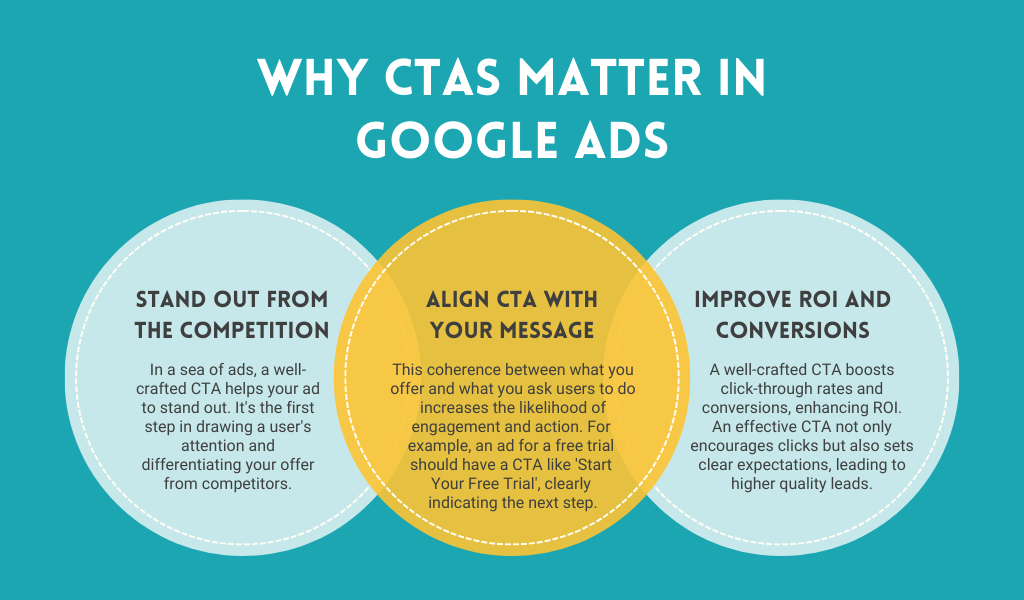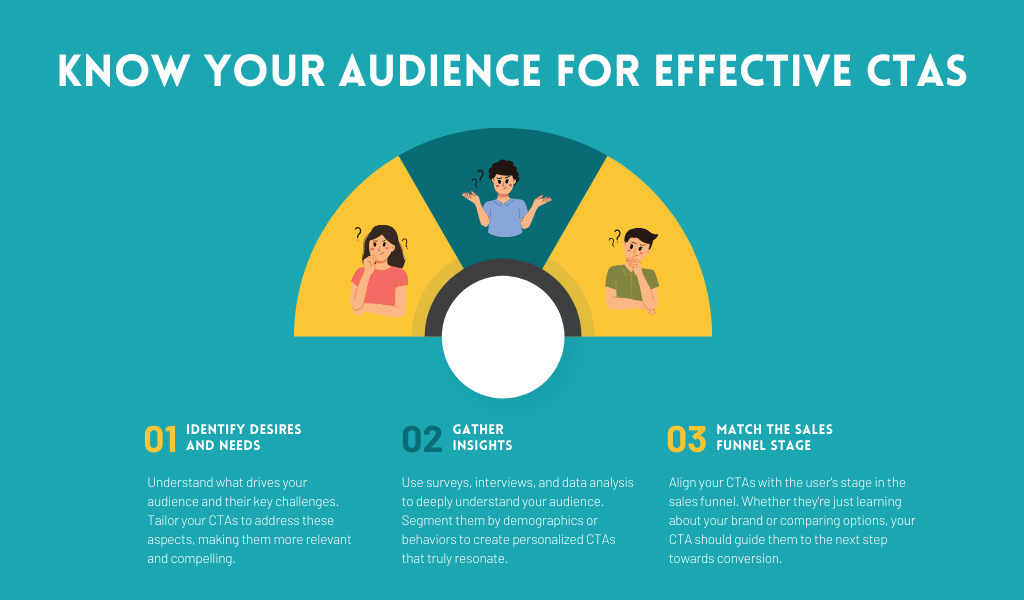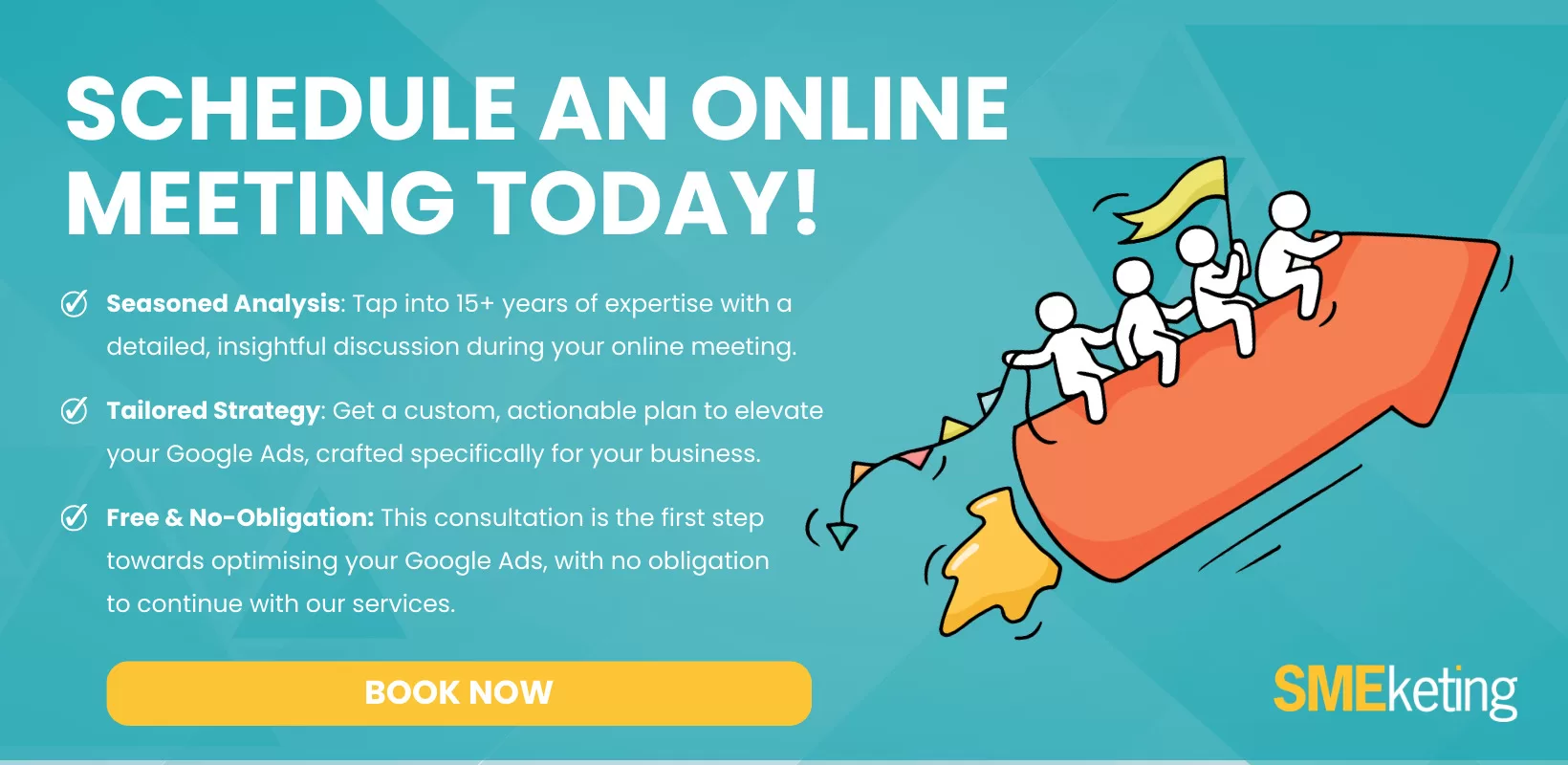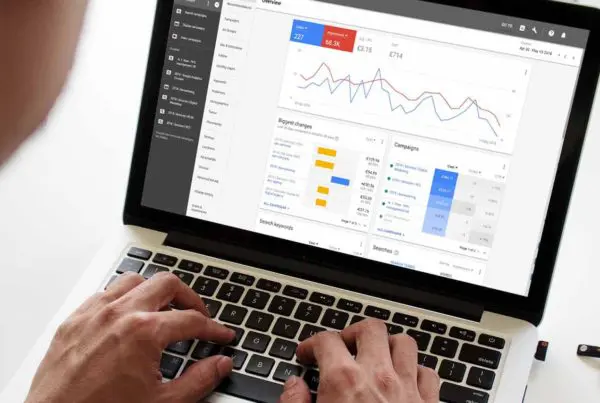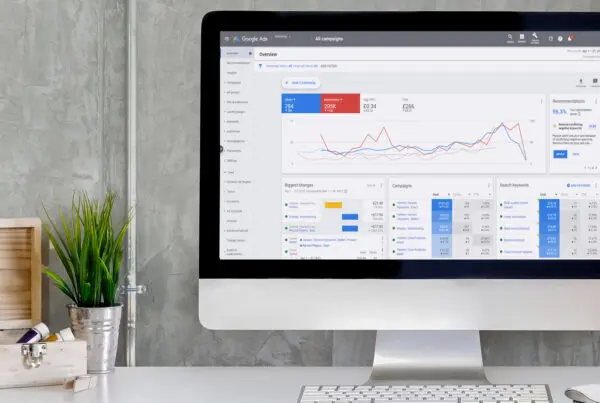In today’s digital era, establishing a strong online presence is essential for any business. Among the various digital marketing strategies, Google Ads stands out as a powerful platform for driving traffic and conversions. A key component of this is crafting an effective CTAs for Google Ads, which plays a pivotal role in capturing audience attention and encouraging them to engage with your brand.
CTAs in Google Ads play a crucial role in enticing users to take the desired action, whether it’s making a purchase, signing up for a newsletter, or requesting more information.
Understanding the Importance of CTAs in Google Ads
To fully comprehend the significance of CTAs in Google Ads, it is essential to grasp their broader role in digital marketing. CTAs serve as the catalyst that bridges the gap between the user’s intent and the advertiser’s desired outcome.
They guide and motivate users to move forward in the conversion funnel. Without a strong CTA, even the most well-crafted ad copy can fall flat, resulting in missed opportunities and wasted advertising spend.
The Role of CTAs in Digital Marketing
CTAs act as a directional signpost, directing users towards the next step they should take. They provide a clear indication of what action the advertiser wants the user to take and help to eliminate any confusion or uncertainty.
Whether it’s encouraging users to make a purchase, download an e-book, sign up for a free trial, or subscribe to a newsletter, the CTA is the driving force behind conversions. It is the linchpin that transforms interested users into valuable customers.
When crafting a CTA, it is important to consider the user’s mindset and align it with their needs and desires. By understanding the target audience, advertisers can create CTAs that resonate with their potential customers.
For example, a CTA that appeals to the user’s fear of missing out (FOMO) can be highly effective in driving conversions.
Phrases like “Limited time offer” or “Don’t miss out on this exclusive deal” can create a sense of urgency and prompt users to take immediate action.
Also, the placement of the CTA within the ad is crucial. It should be strategically positioned where it is easily noticeable and accessible to the user. Placing the CTA above the fold, where it is visible without scrolling, can significantly increase click-through rates.
Additionally, using contrasting colours or bold fonts for the CTA can make it visually stand out and grab the user’s attention.
Why CTAs in Google Ads Matters
In the realm of Google Ads, competition is fierce, and attention spans are short. Users are constantly bombarded with ads, so it’s crucial to make yours stand out from the crowd. A compelling CTA can make all the difference in capturing the user’s attention and enticing them to click on your ad.
When creating a Google Ads campaign, it is important to align the CTA with the ad’s message and offer. The CTA should clearly communicate the value proposition and highlight the benefits of taking the desired action.
For instance, if the ad promotes a free trial of a software product, the CTA could be “Start your free trial now” or “Unlock the power of our software for free.”
Additionally, since Google Ads charges advertisers per click (CPC), a well-designed CTA can help maximise your return on investment (ROI) by increasing the likelihood of conversions. By optimising the CTA, advertisers can improve their ad’s click-through rate (CTR) and conversion rate, ultimately driving more qualified traffic to their website.
It is worth noting that the effectiveness of a CTA can be enhanced through A/B testing. By testing different variations of CTAs, advertisers can gather data and insights on which CTAs resonate best with their target audience. This iterative process allows for continuous improvement and optimisation of the ad campaign.
The Anatomy of an Effective CTA
Creating an effective Call-to-Action (CTA) involves careful consideration of several key elements. Let’s explore these elements below:
Key Elements of a Successful CTA
A successful CTA incorporates these vital components:
- Clarity: The CTA should clearly communicate what action the user needs to take. It should leave no room for confusion or ambiguity. By using concise and straightforward language, the CTA can guide users towards the desired action.
- Visibility: The CTA should be prominent and easy to spot, ensuring it doesn’t get lost within the ad copy. It should stand out visually, using contrasting colours, bold fonts, or eye-catching graphics. This way, users can quickly identify where they need to click or engage.
- Urgency: By creating a sense of urgency, such as using phrases like “Limited Time Offer” or “Last Chance,” the CTA can motivate users to act quickly. Urgency triggers the fear of missing out (FOMO), compelling users to take immediate action to avoid potential loss or regret.
- Relevance: The CTA should align with the user’s intent and the content of the ad. It should be contextually relevant and provide a logical next step for the user. By connecting the CTA with the user’s needs and expectations, it becomes more enticing and persuasive.
Language and Tone in CTAs
The language and tone used in CTAs play a vital role in capturing the user’s attention and sparking action. The choice of words can significantly impact the effectiveness of the CTA. It is essential to use language that resonates with the target audience and elicits the desired response.
The language should project a sense of excitement, exclusivity, and value. By using words like “exclusive,” “limited,” or “special,” the CTA can create a feeling of exclusivity and make users feel privileged to take advantage of the offer.
Additionally, incorporating action words and power verbs can make the CTA more compelling. These words evoke a sense of action and encourage users to engage immediately.
For example, instead of using a generic “Sign Up” button, try using more persuasive terms like “Get Started Now” or “Unlock Your Discount.” These phrases create a sense of immediacy and emphasise the benefit users will gain by clicking on the CTA.
Personalisation can also really enhance the effectiveness of CTAs. By tailoring the language to address the specific needs and desires of the target audience, the CTA becomes more relatable and engaging. Personalised CTAs make users feel seen and understood, increasing the likelihood of conversion.
In summary, an effective CTA combines clarity, visibility, urgency, and relevance.
The language and tone used in CTAs should be exciting, exclusive, and value-driven, incorporating action words and power verbs.
By carefully crafting these elements, you can create CTAs that capture attention, spark action, and drive conversions.
Crafting Your CTAs for Google Ads
Now that we have laid the foundation, it’s time to dive into the process of crafting your Google Ads CTA. Let’s explore the essential steps below:
Identifying Your Goal
The first step in creating a compelling CTA is identifying the specific goal you want to achieve.
Is it:
- Driving sales?
- Generating leads?
- Increasing brand awareness?
By clearly defining your objective, you can tailor your CTA to align with that goal.
When identifying your goal, it’s important to consider the broader marketing strategy of your business. Are you launching a new product and aiming to generate buzz? Or are you looking to increase your customer base and drive more sales?
Understanding your overall business objectives will help you craft a CTA that not only aligns with your Google Ads campaign but also supports your larger marketing goals.
Additionally, it’s crucial to consider the specific metrics you will use to measure the success of your CTA. Will you be tracking click-through rates, conversion rates, or overall revenue generated? By setting clear goals and metrics, you can accurately evaluate the effectiveness of your CTA and make data-driven optimizations.
Knowing Your Audience
Understanding your target audience is paramount when crafting the perfect CTA. What motivates them? What pain points are they looking to solve? By gaining insights into your audience’s desires and needs, you can tailor your CTA to speak directly to them, capturing their attention and compelling them to take action.
One effective way to understand your audience is through market research. Conduct surveys, interviews, or analyse customer data to gain a deeper understanding of their preferences and behaviors. By segmenting your audience based on demographics, interests, or buying habits, you can create personalised CTAs that resonate with each specific group.
Moreover, consider the user journey and where your audience is in the sales funnel. Are they in the:
- Awareness stage?
- Just discovering your brand?
- Consideration stage, comparing your offerings with competitors?
By aligning your CTA with the appropriate stage, you can provide the right information and guidance to move your audience closer to conversion.
Choosing the Right Words
Choosing the right words can make a world of difference in the performance of your CTA. Experimenting with different variations and conducting split tests can help you identify the most effective wording for your target audience.
Don’t be afraid to get creative and think outside the box. Remember, every word counts when it comes to driving conversions.
Consider the tone and language that resonates with your audience. Are they more responsive to a casual and friendly tone, or do they prefer a professional and authoritative approach? By understanding their preferences, you can craft a CTA that speaks their language and establishes a connection.
In addition to the actual words used, the design and placement of your CTA can also impact its effectiveness.
Experiment with
- Different colours
- Fonts
- Button sizes
This will help you find the combination that stands out and grabs attention.
Test different positions on your landing page or within your ad copy to determine the optimal placement for maximum visibility.
Lastly, don’t forget the power of urgency and scarcity in driving action. By incorporating time-limited offers or limited stock availability in your CTA, you can create a sense of urgency that compels your audience to act now rather than later.
Best Practices for Google Ads CTAs
Now that you have crafted your CTA, it’s important to ensure it stands out and performs optimally. Here are some best practices to follow:
Making Your CTA Stand Out
In a sea of ads, your CTA needs to grab attention. Consider using contrasting colours, bold fonts, or even animated elements to make your CTA visually appealing and impossible to ignore.
Testing and Refining Your CTAs
The key to continuous improvement is testing and refining your CTAs. Conduct A/B tests to compare different variations and identify what resonates best with your audience.
By analysing the results and making data-driven decisions, you can optimise your CTAs for maximum effectiveness.
Common Mistakes to Avoid When Writing CTAs
While it’s essential to understand the best practices for crafting CTAs, it’s equally important to recognise common mistakes and avoid them. Let’s explore a couple of these pitfalls:
Overcomplicating Your Message
One common mistake is overcomplicating the message in your CTA. Keep it simple and straightforward. The user should immediately understand what action they need to take and the benefit they will receive. Avoid using jargon or complex language that may confuse or discourage action.
Neglecting the Value Proposition
Another mistake is neglecting to explain the value proposition within the CTA. Users need to know what they stand to gain by clicking on your ad and taking action. Make it clear why your offering is valuable and how it can address their needs or desires.
Crafting compelling CTAs for Google Ads requires a thoughtful approach. By understanding their importance, focusing on key elements, and tailoring them to your specific audience and goals, you can drive conversions and maximise the impact of your Google Ads campaign. Remember to continually test, refine, and optimise your CTAs to ensure they are as impactful as possible. With the right CTAs in place, you can take your Google Ads campaigns to new heights, capturing the attention and action of your target audience.
- How to Do Keyword Research for Google Ads - January 15, 2024
- A Comprehensive Guide to Google Ads for B2C Businesses - January 8, 2024
- How to Write Calls to Action (CTAs) for Google Ads - December 25, 2023


